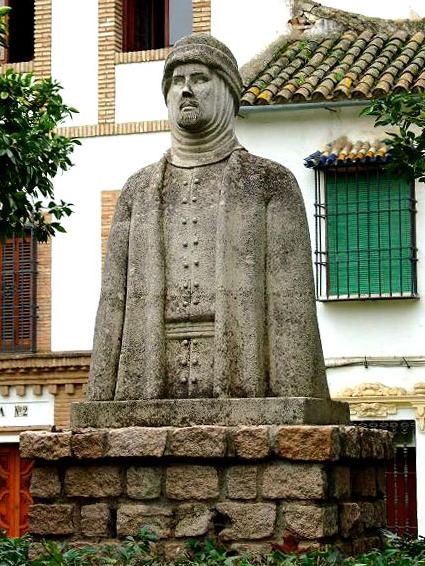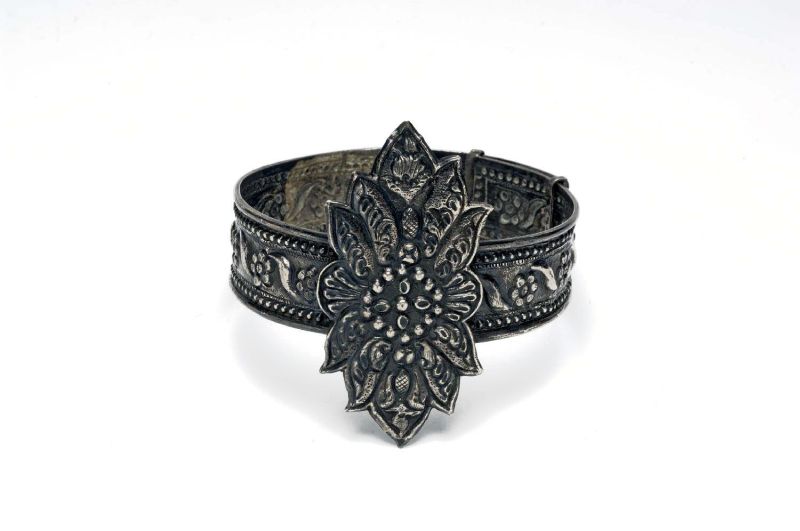|
Sigmundur Brestisson
Sigmundur Brestisson (961–1005) was a Faroese Viking chieftain, and was responsible for introducing Christianity to the Faroe Islands in 999. He is one of the main characters of the Færeyinga saga. According to the Færeyinga saga, emigrants who left Norway to escape the tyranny of Harald I of Norway, settled in the islands about the beginning of the 9th century. Early in the 11th century, Sigmundur, whose family had flourished in the southern islands but had been almost exterminated by invaders from the north, was sent back to the Faroe Islands, whence he had escaped, to take possession of the islands for Olaf Tryggvason, king of Norway. Sigmundur was the first Faroe Islander to convert to the Christian faith, bringing Christianity to the Faroes at the decree of Olaf Tryggvason. Initially Sigmundur sought to convert the islanders by reading the decree to the Alting in Tórshavn, but was nearly killed by the resulting angry mob. He then changed his tactics, went with arme ... [...More Info...] [...Related Items...] OR: [Wikipedia] [Google] [Baidu] |
Skúvoy
Skúvoy or Skúgvoy ( da, Skuø) is an island in the central Faroe Islands, located to the south of Sandoy. It is named after the large number of great skua present on the island (who have a habit of attacking intruders). There is only one settlement on the island: Skúvoy on the east coast. There are two mountains: Knúkur (392 m) and Heyggjurin Mikli (391 m). History The Black Death in the 14th century killed all the inhabitants except one woman; her cottage can still be seen. Skúvoy was also the home of Sigmundur Brestisson, the hero of the Færeyinga saga (Saga of the Faroese). Bird habitat There are 300–400 m cliffs along the west coast, which are home to many guillemots. Egg harvesting takes place in early June, though this occurs in the first week only so as to allow the guillemots to lay again. The island has been identified as an Important Bird Area by BirdLife International because of its significance as a breeding site for seabirds, especially northern ... [...More Info...] [...Related Items...] OR: [Wikipedia] [Google] [Baidu] |
Løgting
The Løgting (pronounced ; da, Lagtinget) is the unicameral parliament of the Faroe Islands, an autonomous territory within the Danish Realm. The name literally means "''Law Thing''"—that is, a law assembly—and derives from Old Norse ''lǫgþing'', which was a name given to ancient assemblies. A ''ting'' or ''þing'' has existed on the Faroe Islands for over a millennium and the Løgting was the highest authority on the islands in the Viking era. From 1274 to 1816 it functioned primarily as a judicial body, whereas the modern Løgting established in 1852 is a parliamentary assembly, which gained legislative power when home rule was introduced in 1948. The Manx Tynwald and the Icelandic Alþing are the two other modern parliaments with ties back to the old Norse assemblies of Europe. Today, the Faroe Islands compromise one constituency, and the number of MPs is fixed at 33. The first election with this new system was held on 19 January 2008, after the Election law was c ... [...More Info...] [...Related Items...] OR: [Wikipedia] [Google] [Baidu] |
Converts To Christianity From Pagan Religions
Religious conversion is the adoption of a set of beliefs identified with one particular religious denomination to the exclusion of others. Thus "religious conversion" would describe the abandoning of adherence to one denomination and affiliating with another. This might be from one to another denomination within the same religion, for example, from Baptist to Catholic Christianity or from Sunni Islam to Shi’a Islam. In some cases, religious conversion "marks a transformation of religious identity and is symbolized by special rituals". People convert to a different religion for various reasons, including active conversion by free choice due to a change in beliefs, secondary conversion, deathbed conversion, conversion for convenience, marital conversion, and forced conversion. Proselytism is the act of attempting to convert by persuasion another individual from a different religion or belief system. Apostate is a term used by members of a religion or denomination to re ... [...More Info...] [...Related Items...] OR: [Wikipedia] [Google] [Baidu] |
Norwegian Christian Missionaries
Norwegian, Norwayan, or Norsk may refer to: *Something of, from, or related to Norway, a country in northwestern Europe *Norwegians, both a nation and an ethnic group native to Norway *Demographics of Norway *The Norwegian language, including the two official written forms: **Bokmål, literally "book language", used by 85–90% of the population of Norway **Nynorsk, literally "New Norwegian", used by 10–15% of the population of Norway *The Norwegian Sea Norwegian or may also refer to: Norwegian *Norwegian Air Shuttle, an airline, trading as Norwegian **Norwegian Long Haul, a defunct subsidiary of Norwegian Air Shuttle, flying long-haul flights *Norwegian Air Lines, a former airline, merged with Scandinavian Airlines in 1951 *Norwegian coupling, used for narrow-gauge railways *Norwegian Cruise Line, a cruise line *Norwegian Elkhound, a canine breed. *Norwegian Forest cat, a domestic feline breed *Norwegian Red, a breed of dairy cattle *Norwegian Township, Schuylkill County, ... [...More Info...] [...Related Items...] OR: [Wikipedia] [Google] [Baidu] |
Faroese People Of Norwegian Descent
Faroese ( ) or Faroish ( ) may refer to anything pertaining to the Faroe Islands, e.g.: *the Faroese language * the Faroese people Faroese people or Faroe Islanders ( fo, føroyingar; da, færinger) are a North Germanic ethnic group and nation native to the Faroe Islands. The Faroese are of mixed Norse and Gaelic origins. About 21,000 Faroese live in neighbouring count ... {{Disambiguation Language and nationality disambiguation pages ... [...More Info...] [...Related Items...] OR: [Wikipedia] [Google] [Baidu] |
People From Skúvoy Municipality
A person ( : people) is a being that has certain capacities or attributes such as reason, morality, consciousness or self-consciousness, and being a part of a culturally established form of social relations such as kinship, ownership of property, or legal responsibility. The defining features of personhood and, consequently, what makes a person count as a person, differ widely among cultures and contexts. In addition to the question of personhood, of what makes a being count as a person to begin with, there are further questions about personal identity and self: both about what makes any particular person that particular person instead of another, and about what makes a person at one time the same person as they were or will be at another time despite any intervening changes. The plural form "people" is often used to refer to an entire nation or ethnic group (as in "a people"), and this was the original meaning of the word; it subsequently acquired its use as a plural form of p ... [...More Info...] [...Related Items...] OR: [Wikipedia] [Google] [Baidu] |
1005 Deaths
1 (one, unit, unity) is a number representing a single or the only entity. 1 is also a numerical digit and represents a single unit of counting or measurement. For example, a line segment of ''unit length'' is a line segment of length 1. In conventions of sign where zero is considered neither positive nor negative, 1 is the first and smallest positive integer. It is also sometimes considered the first of the infinite sequence of natural numbers, followed by 2, although by other definitions 1 is the second natural number, following 0. The fundamental mathematical property of 1 is to be a multiplicative identity, meaning that any number multiplied by 1 equals the same number. Most if not all properties of 1 can be deduced from this. In advanced mathematics, a multiplicative identity is often denoted 1, even if it is not a number. 1 is by convention not considered a prime number; this was not universally accepted until the mid-20th century. Additionally, 1 is the ... [...More Info...] [...Related Items...] OR: [Wikipedia] [Google] [Baidu] |
961 Births
Year 961 ( CMLXI) was a common year starting on Tuesday (link will display the full calendar) of the Julian calendar. Events By place Byzantine Empire * March 6 – Siege of Chandax: Byzantine forces under Nikephoros II Phokas capture and pillage Chandax after an 8-month siege. Nikephoros massacres the population without mercy and carries them off into slavery, returning to Constantinople with Emir Abd al-Aziz ibn Shu'ayb and his family as prisoners. The island Emirate of Crete is converted into a Byzantine theme and the remaining Muslims are converted to Christianity. Europe * May 26 – Otto I, Holy Roman Emperor elects his 6-year-old son Otto II as heir apparent and co-ruler at the Imperial Diet in Worms. He is crowned at Aachen, and placed under the tutelage of his grandmother Matilda and his half-brother William of Mainz. Otto's own brother Bruno I is charged with the provisional government of Lorraine again. * Summer – Otto I lea ... [...More Info...] [...Related Items...] OR: [Wikipedia] [Google] [Baidu] |
Arm Ring
An arm ring, also known as an armlet or an armband, is a band of metal, usually a precious metal, worn as jewelry or an ornament around the biceps of the upper arm. The arm ring is similar to a bracelet or bangle, though it must be shaped and sized to fit snugly to the upper arm. Historically, the arm ring was commonly worn by men, and often a " ''ring''" in Bronze-Age heroic literature would refer to an arm ring, rather than a finger ring. Modern-day arm rings are generally fashion accessories worn by women. In Indonesia, an arm ring is called ''kelat bahu''; it is commonly used by both men and women as traditional jewelry in Javanese, Sundanese, and Balinese traditional costumes, worn usually in wedding ceremony or in traditional dance. The decorative arm rings are usually made of metals such as gold, silver, or brass, and can trace their history from the Indonesian Hindu-Buddhist past of ancient Java. Sri Lankan history notes that brides wore armlets to ward off ill ... [...More Info...] [...Related Items...] OR: [Wikipedia] [Google] [Baidu] |
Suðuroy
Suðuroy (literally South Island, da, Suderø) is the southernmost of the Faroe Islands. The island covers 163.7 square kilometres (63.2 sq mi). In 2018 the population was 4,601. Suðuroy region (sýsla) comprises this island and Lítla Dímun, the next isle northward in the Faroes, which is uninhabited. History One ancient settlement, Víkarbyrgi was abandoned late in the 1990s. Another settlement, Akraberg was abandoned around 1350 because of the Black Death; the people who lived there at that time came from Friesland, and legend has it that people in Hørg (in Sumba) can trace their ancestry back to this settlement, which was situated on the southernmost point of the island. In the 17th century, Suðuroy was subjected to repeated attacks by North African pirates, who in the Faroe Islands were referred to as Turks when North Africa belonged to the Ottoman Empire. One well known such incident was the Slave raid of Suðuroy .They abducted several women and child ... [...More Info...] [...Related Items...] OR: [Wikipedia] [Google] [Baidu] |
Decapitation
Decapitation or beheading is the total separation of the head from the body. Such an injury is invariably fatal to humans and most other animals, since it deprives the brain of oxygenated blood, while all other organs are deprived of the autonomic nervous system, involuntary functions that are needed for the body to function. The term ''beheading'' refers to the act of deliberately decapitating a person, either as a means of murder or as an capital punishment, execution; it may be performed with an axe, sword, knife, machete or by mechanical means such as a guillotine or chainsaw. An executioner who carries out executions by beheading is sometimes called a headsman. Accidental decapitation can be the result of an explosion, a car or industrial accident, improperly administered execution by hanging or other violent injury. Suicide by decapitation is rare but not unknown. The national laws of Saudi Arabia, Yemen, and Qatar permit beheading; however, in practice, Saudi Arabia i ... [...More Info...] [...Related Items...] OR: [Wikipedia] [Google] [Baidu] |


.jpg)
_1938.jpg)




